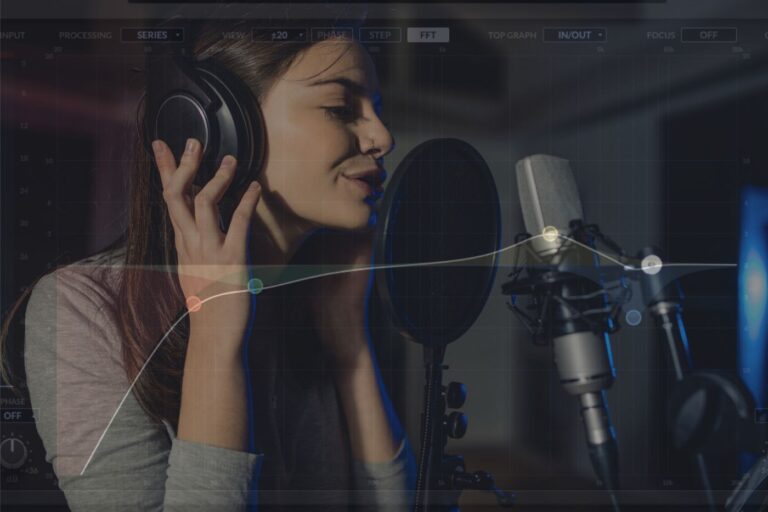Neighboring Rights Royalties in 2025: What Are They?

Neighboring rights are essential to copyright law in the global music industry. These rights pertain to the legal right to perform or broadcast recorded music in public settings, such as radio, streaming services, television, and venues like clubs and restaurants.
KEY TAKEAWAYS
Unlike authors’ rights that focus on the work’s author, neighboring rights are linked to the rights of other creative contributors, such as musicians and sound recording owners.
If you are a professional musician you need to know about neighboring rights royalties.
In my personal experience, neighboring rights can be a lucrative source of income, though for me they typically have been much smaller than sync license fees and performance royalties.
Every song has two types of copyrights: one for the composition and another for the recorded version. The term “neighboring rights” refers to these rights that “neighbor” the original author’s rights, such as public performance royalties due to the sound recording copyright holder.
These rights help protect the interests of individuals or entities involved in creating and distributing a recorded song, ensuring they receive their rightful share of royalties.
Though neighboring rights might appear complicated, understanding their importance and function in the music industry is crucial for musicians, producers, and other industry players to protect their work and receive appropriate compensation.
Understanding Neighboring Rights
Definition and Scope
Neighboring rights (or neighbouring rights in UK) are a form of intellectual property rights that complement existing copyright law. While copyright law primarily protects the rights of authors and composers, neighboring rights focus on the rights of performing artists(e.g., musicians, singers, actors), recording artists, producers of phonograms, and broadcasting organizations.
These rights grant exclusive control over certain economic aspects of their creative work, including:
- Public performance
- Broadcasting
- Reproduction
- Distribution
- Rental or lending
Historical Background
The concept of neighboring rights can be traced back to the Rome Convention of 1961. The International Convention for the Protection of Performers, Producers of Phonograms, and Broadcasting Organisations (Rome Convention) is a multilateral treaty established by the United Nations Educational, Scientific, and Cultural Organization (UNESCO) that defines the rights of performing artists, producers of phonograms, and broadcasters on an international level.
International Framework
In addition to the Rome Convention, other landmark treaties and agreements provide an international framework for the protection of neighboring rights. These include:

WIPO Performances and Phonograms Treaty (WPPT)
Adopted in 1996, the treaty aims to establish a clear and balanced framework for the protection of performers and producers of phonograms in signal broadcasts and digital communication.

Agreement on Trade-Related Aspects of Intellectual Property Rights (TRIPS)
Adopted in 1994 by the World Trade Organization (WTO) members, TRIPS addresses the global standards of protection and enforcement of intellectual property rights, including neighboring rights.

Beijing Treaty on Audiovisual Performances
Signed in 2012, this treaty provides increased protection and rights management for performers in audiovisual works, such as movies and television.
These international agreements require signatory countries to recognize and protect neighboring rights in their respective jurisdictions.
However, it is important to note that the level of protection and enforcement of neighboring rights varies across countries, as individual nations may have their own unique laws and regulations regarding intellectual property rights.
Rights Holders and Key Players
Performers and Artists
Performing and recording artists are at the heart of the music industry. They are responsible for creating the music and performances fans love and appreciate. In the context of neighboring rights, these artists are entitled to royalties whenever their recorded performances are played in public or broadcast.
This includes singers, musicians, and even session musicians who may not be the primary featured artists but have contributed to the recording.
Some main entities managing and distributing royalties to performers include rights societies and holders. Typically, artists will register with these organizations to ensure they receive their due compensation.
Recording Industry Representatives
The recording industry is comprised of various entities, such as record labels and master owners, who play crucial roles in the production, promotion, and distribution of recorded music.
They are often responsible for managing the rights associated with sound and master recordings, working hand-in-hand with publishing rights organizations to ensure proper payment of royalties to artists.
Record labels and master owners are also rights holders, meaning they are entitled to a portion of neighboring rights royalties. This includes the ownership and management of the master recording, the original version of a track from which all other copies are made.
When a track is publicly performed or broadcast, both the owner of the sound recording and the performing artist are entitled to royalties.
Broadcasters and Radio Stations
Broadcasters and radio stations are important players in the music business, as they share and distribute music to a wider audience.
When music is played on their platforms, they are required to secure licenses and pay royalties to rights holders, including the recording artists and producers of phonograms. These payments are typically facilitated through rights societies, which work to ensure fair compensation for all involved parties.
Radio broadcasters are major players in this process, as their platforms are often responsible for a significant portion of public performances and broadcasts of recorded music.
Working with rights societies, they help ensure that artists, record labels, and other rights holders are rightfully compensated for their work.
Rights and Royalties
Nature of Neighboring Rights Royalties
Neighboring rights royalties are a type of public performance royalties attributed specifically to the rights of performers and sound recording copyright holders when the public performance of a sound recording occurs.
These performances can take place through various mediums such as radio, television, streaming services, and even in public places like clubs and restaurants.
In essence, neighboring rights royalties are a revenue stream ensuring that performers and copyright holders are compensated fairly for the use of their work.
The Fair Play, Fair Pay principle underpins these royalty payments, recognizing the efforts and creativity of the individuals involved in producing sound recordings.
Collection and Distribution
For the effective collection and distribution of neighboring rights royalties, collective management organizations (CMOs) or collection societies play a crucial role.
These organizations monitor the public performances of sound recordings and collect royalty payments on behalf of their members, which may include performers, labels, and other rights holders.
Several large international collection agencies facilitate the process of collecting neighboring rights royalties. It is essential for you, as a rights holder, to register your work with these agencies.
This will enable the collection societies to track the public performance of your sound recordings and ensure that you receive the appropriate royalty payments.
Master Recordings and Copyrights
Ownership and Copyright
It’s important to understand the different types of copyrights and ownership rights, particularly in relation to master recordings.
In simple terms, a master recording is the original version of a musical recording from which all other copies are derived. The owner of the master recording typically holds the sound recording copyright, giving them control over how the recording is used and distributed.
On the other hand, the composition copyright focuses on the underlying musical work, such as the lyrics and melody. In most cases, the songwriter or composer holds this copyright. However, it is crucial to note that the sound recording and composition copyright are separate entities and may be owned by different parties.
Both master recording and composition copyrights are assets the owner can exploit by signing deals on them.
As a performer, you may also have copyright protection rights. Performers who have made an audible contribution to a sound recording may receive a share of royalties referred to as neighboring rights. These rights are concerned with the public performance and broadcast of the master recordings.
Exploitation and Licensing
When generating income from master recordings, the master rights owner plays a vital role. They have the authority to grant licenses for the use of their sound recordings in various contexts. Some common types of licenses include:
- Mechanical License: Allows others to reproduce and distribute physical or digital copies of the sound recording.
- Synchronization License: Provides permission to use a sound recording in timed synchronization with visual media, such as films, advertisements, and video games.
- Sample License: Grants the right to use a portion of a sound recording in the creation of a new recording.
As a copyright holder, it’s essential to be aware of your rights and the various revenue streams available to you.
By understanding the scope and limits of your rights as a master copyright holder or performer, you can ensure the proper compensation for the usage of your work and protect your interests.
Types of Uses and Royalties
Public Performance and Broadcasting
You are entitled to neighboring rights royalties when your recorded music is publicly performed or broadcasted. This includes radio stations, television broadcasts, and public venues (such as bars, restaurants, and stores) that play your music.
Collective rights management organizations typically collect these royalties on behalf of the rights holders, which include the recording artist, the record label, and any non-featured performers (such as session musicians).
- Public Performance Rights: These rights compensate the songwriter or composer when their music is publicly performed.
- Neighboring Rights: These rights compensate the master holder (typically, the label) and the performer when music is publicly performed.
| Entity | Role in Collecting Royalties |
|---|---|
| Broadcasting Organizations | Pay fees for the right to use sound recordings |
| Collective Rights Management Organizations | Collect and distribute royalties to rights holders |
Digital and Online Radio
Digital performance royalties are generated when your music is played on digital platforms such as internet radio, satellite radio, and non-interactive digital transmissions.
These royalties are paid by digital broadcasters and satellite radio companies like Sirius XM to organizations like SoundExchange, which then distributes the royalties to the rights holders.
Here are some entities involved in digital performance royalties:

Internet Radio
Non-interactive online radios like Pandora generate digital performance royalties when they stream your music. These royalties are paid to SoundExchange for distribution to the appropriate rights holders.

Satellite Radio
Satellite radio services like Sirius XM also generate digital performance royalties for the public performance of sound recordings. As with internet radio, these royalties are collected by SoundExchange on behalf of the rights holders.

Terrestrial Radio
some countries, terrestrial radio stations also pay digital performance royalties for neighboring rights. However, this is not the case in the United States, where terrestrial radio stations only pay performance royalties for the musical composition, not the sound recording.
Here’s a summary of the types of platforms and the organizations involved:
| Platform | Royalty Collection Organization |
|---|---|
| Internet Radio | SoundExchange |
| Satellite Radio | SoundExchange |
| Terrestrial Radio (Non-U.S.) | Various organizations, depending on the country |
Understanding these different types of uses and royalties is crucial for maximizing your revenue from your music. Ensure that you’re registered with the appropriate organizations to receive the royalties you are entitled to.
Global Differences in Neighboring Rights
Variances by Country
When it comes to neighboring rights, it’s essential to understand that the regulations and royalty collection processes differ across countries.
In many nations, collective management organizations (CMOs) collect and distribute neighboring rights royalties for the public performance of sound recordings. These organizations usually have reciprocal agreements with their counterparts in other countries, ensuring that royalties are collected and paid accordingly to rights holders in their home territory.
However, the extent of the protection provided to rights holders may vary depending on the country’s domestic legislation. Some countries, like members of the International Labour Organization and the Cultural Organization, might offer more comprehensive protection of neighboring rights, while others have more limitations.
Moreover, the inclusion of music publishers in neighboring rights also varies by country. While some grant neighboring rights royalties to music publishers, others do not, which can impact the earnings for rights holders in different regions.
The Situation in the United States
In the United States, the situation is quite different from that of other countries. Unlike most nations, the U.S. does not grant a broadly worded exclusive right of communication to the public for sound recordings. Instead, neighboring rights royalties for public performances are limited to a small subset of digital transmissions, such as internet and satellite radio. This means that terrestrial radio broadcasts, which make up a significant portion of public performances, do not generate neighboring rights royalties for recording artists and labels.
The following table summarizes the differences in neighboring rights protection across the United States, International Labour Organization member countries, and other various countries:
| Entity | Neighboring Rights Protection | Royalty Collection for Music Publishers |
|---|---|---|
| United States | Limited to digital broadcasts | No |
| ILO Member Countries | Comprehensive | Varies by country |
| Other Various Countries | Varies by country | Varies by country |
Challenges and Considerations
Disparities Among Stakeholders
It’s important to understand that neighboring rights encompass a variety of stakeholders with different interests and concerns. These can include session musicians, authors of the work, musical recording artists, and music performers.
Each of these stakeholders brings their own unique perspectives and needs to the table, which can sometimes lead to disparities in the application and understanding of neighboring rights.
For example, session musicians may have different interests than the authors of the work when it comes to collecting royalties from public performances.
Furthermore, the rights and interests of music performers at live events may not fully align with those of service providers and public venues. Balancing these diverse interests is often a challenge that needs to be addressed when dealing with neighboring rights.
Legal and Ethical Aspects
Neighboring rights involve several legal and ethical aspects that can create challenges for the various stakeholders concerned. One of the major ethical considerations is ensuring fair compensation for all parties involved.
This can encompass service providers, such as digital radio stations, publishing administrators, and those responsible for facilitating the performance or playback of the music in public places.
When it comes to legal aspects, the situation can become even more complex. Different jurisdictions have their own laws and regulations around neighboring rights, which can result in inconsistencies and confusion.
For instance, the way live performances are treated might differ between countries, leading to the need for separate agreements and negotiations.
Additionally, the rise of digital radio and online streaming has introduced new challenges in enforcing and monitoring neighboring rights. Ensuring that all parties are fairly compensated in a rapidly changing technological landscape requires ongoing vigilance and adaptation to new developments.
Industry Practices and Impacts
Modern Developments and Trends
In the music industry, neighboring rights have become increasingly important due to the growth of digital platforms and the expanding ways music is consumed.
These rights are particularly relevant when it comes to radio broadcasts, satellite radio, and digital streaming services. It generates over $2 billion per year and plays a crucial role in compensating artists and labels for their work.
As a music performer or owner of the master recording, you can benefit from the changes brought about by these modern developments. Neighboring rights compensate both the master holder (usually the label) and the performer when their music is publicly performed via terrestrial or digital broadcast platforms.
Key trends impacting neighboring rights:
- The rise of digital platforms and streaming services
- The global expansion of copyright law
- Increased awareness among artists and music publishers
The Influence on Music Creation and Distribution
The evolution of the music business has also resulted in the growth of neighboring rights concerning music creation and distribution.
For instance, an artist could be considered a co-maker by contributing financially to the recording of the song, such as paying for studio fees or production costs. In such a case, the artist and the label would share the neighboring rights for the sound recording.
Neighboring rights impact the composition and recording of a song and the various players involved in the music industry. Here’s an overview of the categories of people affected:
- Music performer: The artist or musician, including contracted featured artists.
- Master recording owner: The label or the artist who owns the recording.
- Music publishers: The entities responsible for managing the composition of the song.
Conclusion
Neighboring rights royalties are a major source of income in the music industry, significantly impacting everyone from artists and master recording owners to radio stations and collection societies.
These rights, encompassing terrestrial and non-interactive broadcast platforms, ensure that performers and owners of master recordings receive fair compensation for the public performance of their recordings.
With the digital age evolving, it’s more important than ever for those in the music industry, including contracted featured artists and collective management organizations, to understand and navigate the complexities of neighboring rights collections, ensuring their creative work is protected and monetized appropriately.
Frequently Asked Questions
What is the distinction between neighboring rights and performance rights?
Neighboring rights refer to the rights of certain stakeholders, such as performers and sound recording owners, to receive royalties for the public performance or broadcast of their works. Performance rights, on the other hand, relate to the rights of songwriters and music publishers to receive compensation for the public performance of their compositions. In essence, neighboring rights cover the performance of the recording, while performance rights address the underlying compositions.
Which organizations are responsible for the collection of neighboring rights royalties?
Various organizations worldwide collect neighboring rights royalties for their respective territories. SoundExchange is responsible for this task in the United States, while in the UK, PPL (Phonographic Performance Limited) handles the collection of these royalties.
How do neighboring rights differ from copyright?
Neighboring rights are distinct from copyrights, as they pertain specifically to the rights of performers, producers, and broadcasters concerning the public performance or broadcasting of sound recordings. Copyright, on the other hand, covers a broader array of intellectual property, including literary works, musical compositions, and software.
In what ways do PPL and SoundExchange manage neighboring rights?
PPL and SoundExchange act as collecting societies; they track and collect neighboring rights royalties from various sources, such as radio stations, streaming platforms, and public venues. These organizations then distribute the royalties to the rights holders, often including performers, record labels, and other relevant parties.
Can artists receive compensation through neighboring rights for their performances?
Yes, artists can receive compensation through neighboring rights for their performances. Collecting societies, such as PPL and SoundExchange, distribute royalties to performers and other rights holders when their recordings are publicly performed or broadcast.
What are some examples of related neighboring intellectual property rights?
Neighboring intellectual property rights extend beyond just sound recordings. They can also encompass other forms of creative output, such as photographs, films, and broadcasts. These rights often include the right to control or benefit from the public performance, reproduction, or dissemination of the protected works.





